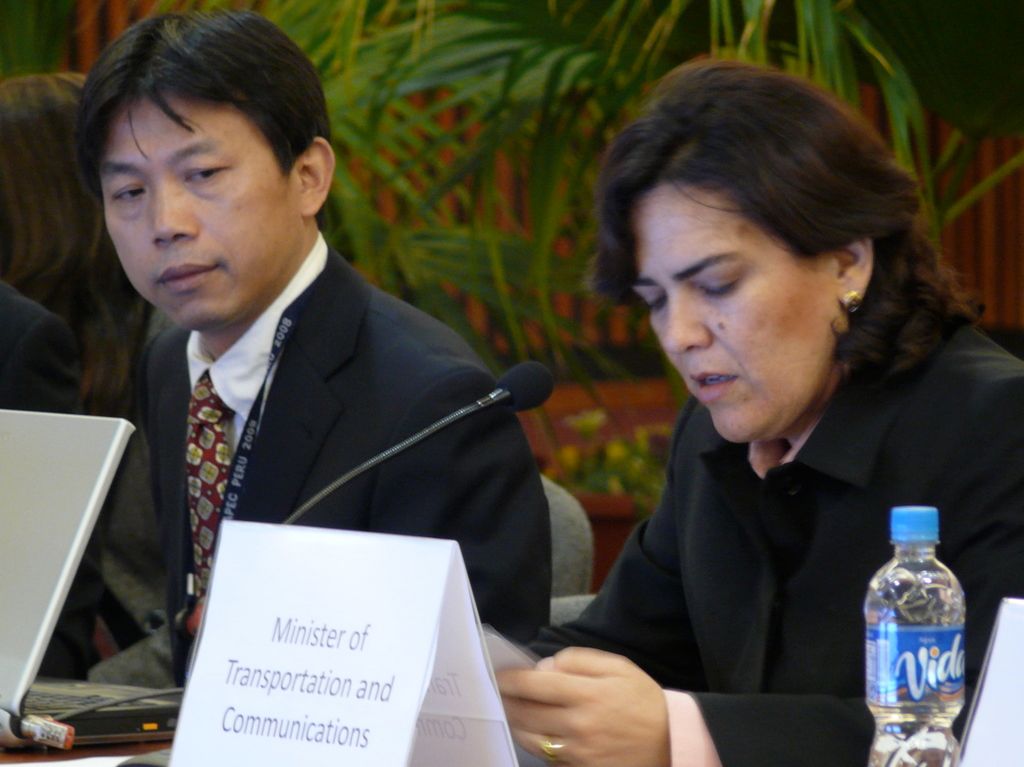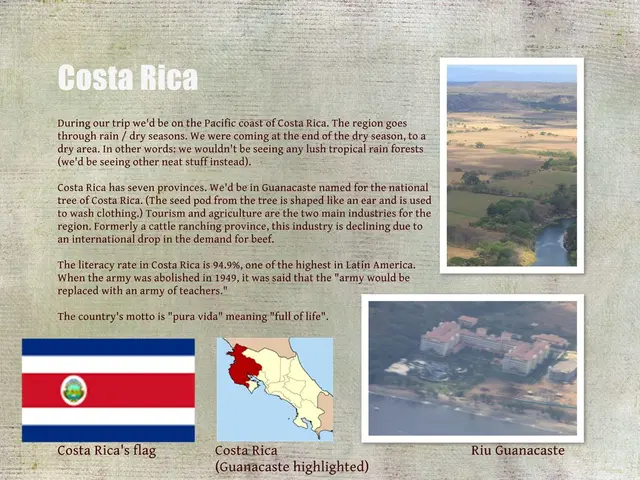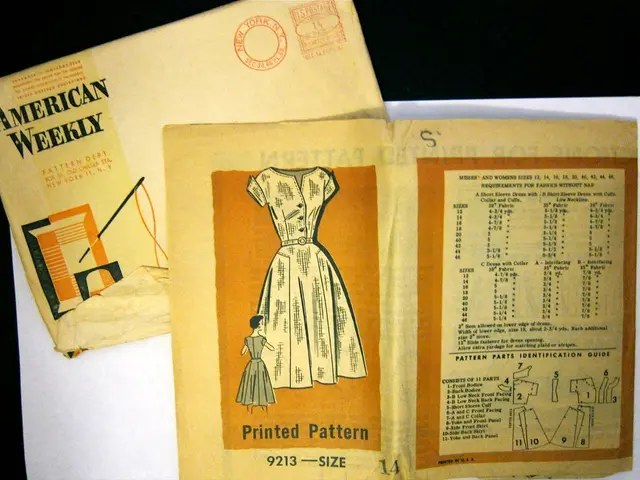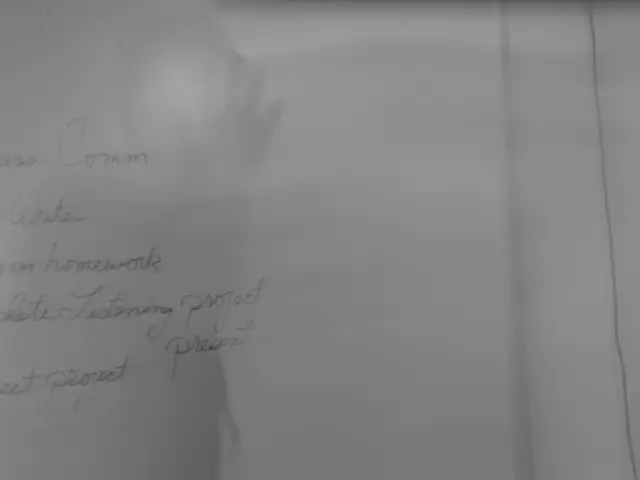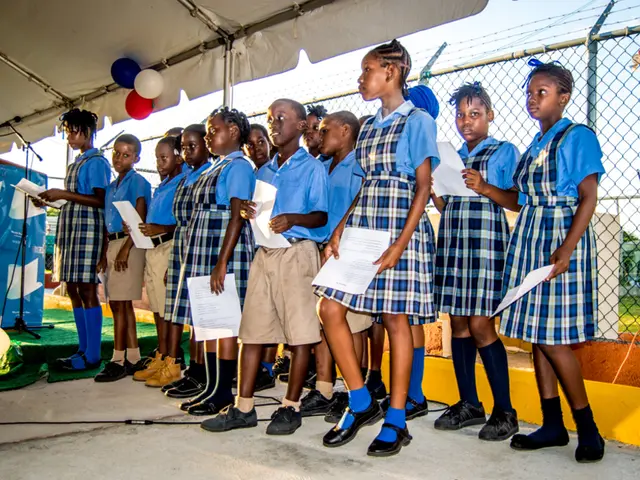Putting the Debate on Voter Turnout to Rest: A Fresh View
Century-Long Controversy Over Waning Voter Participation Rates
In the realm of political discourse, the decline of voter turnout in the United States over the past century has been a hot topic. But instead of arguing around the campfire, let's shed some light on both perspectives and the factors behind voter participation.
Slugging it Out: The Pros and Cons
- Battling for the Decline: Some insist that the drop in voter turnout is an undeniable reality. They point to historical data, showing that voter participation was higher back in the day, especially during crucial elections. They point to the glory days of yore, where voting wasn't just a right, but a civic obligation, driven by strong party affiliations and mobilization efforts.
- Pointing Fingers at False Accusations: On the other side of the ring, scholars argue that the perceived decline is merely a misguided notion. They claim that the methods of calculating voter turnout have evolved over time, skewing comparisons due to the inclusion of newly enfranchised groups such as women and minorities after the civil rights movements, a more extensive electorate. They also note that modern turnout rates are relatively stable when considering factors like the percentage of eligible voters who are actually registered.
What's Keeping People Away from the Polling Booth?
The discussion about whether voter turnout has declined or not can't be fully appreciated without diving into the factors that potentially discourage or deter voters from heading to the polls. These includes:
- Administrative obstacles: Variation and complexity in voter registration laws across states can be a significant deterrent. Requirements such as registering far in advance or providing specific forms of ID can dissuade or prevent eligible voters from participating.
- Political Disenfranchisement: Certain policies disproportionately affect minority communities, reducing their participation in the electoral process. This contributes to an overall lower turnout.
- Apathy: Disillusionment with the political process, often stemming from a belief that one's vote doesn't make a difference, is a major factor in low turnout rates, especially among younger and marginalized demographics.
- Socioeconomic Factors: Lower socioeconomic status is correlated with lower voter turnout. Factors such as poverty, lack of education, and limited access to information contribute to this trend.
- Polarization: Increasing political polarization, with candidates perceived as extreme or unrepresentative, can lead to voter disengagement.
- Inaccessibility: A lack of convenient voting locations, limited early voting options, and the absence of national voting holidays can hinder voter turnout.
- Media's Two-Edged Sword: The media can either shape political perceptions and narratives in a positive or negative way, significantly impacting voter turnout. On one hand, negative campaigning and a focus on scandals can lead to political cynicism and lower voter participation. On the other hand, objective, balanced reporting can foster citizen engagement.
- Digital Divide: While technology has the potential to increase voter engagement, issues like misinformation and lack of digital literacy can have the opposite effect, especially among less tech-savvy populations.
The battle over whether voter turnout has declined in the United States is a complex one. While historical data shows fluctuations in voter turnout, the interpretation of these trends depends on various methodological and contextual factors. Understanding the myriad of elements that influence voter participation – from registration laws to socioeconomic conditions – is essential to tackling the challenges of political participation in a modern democratic society.
historical Context and Trends: A Walk Down Memory Lane
From a historical perspective, the United States has seen high voter turnout during both presidential and midterm elections. The post-World War II era was characterized by robust political engagement, attributed to the intense political climate of the Cold War and significant domestic policy debates. However, from the 1960s onwards, a noticeable decline in turnout was observed, coinciding with increased political disillusionment and social upheaval.
Recent Trends and Comparative Analysis: Punching the Numbers Today
Contrary to the mid-20th century, recent decades have shown a more complex picture. While some elections have witnessed low voter turnout, others, particularly those with high-stakes or polarizing candidates, have seen substantial participation. In the most recent presidential election, for example, there was a high turnout of approximately 67% of eligible voters, which decreased slightly in subsequent elections.
Revisiting the Arguments: A Deeper Look
- Revisiting the Argument for the Decline:Those who argue for a decline also highlight the diminishing impact of traditional political organizations, the weakening of social capital, and the changing nature of modern societies, with more transient populations and less community engagement.
- Revisiting the Argument Against the Decline:Critics of the decline hypothesis place emphasis on changing demographics, the rise of alternative forms of political participation, changes in voting laws, and the role of technology in shaping voter behavior.
A Closer Look at Factors Holding Down Voter Turnout
- Voter Registration Laws (Continued):The disparity in voter registration processes between states continues to be a significant barrier, leading to unequal access to the ballot. However, states with practices like same-day registration often witness higher turnout.
- Political Disenfranchisement (Continued):The long-term impact of disenfranchisement policies on communities of color has led to generational gaps in political participation and feelings of alienation.
- Voter Apathy (Continued):Research indicates that voter apathy is often linked to a lack of trust in government and politicians. This sentiment is exacerbated by political scandals, perceived ineffectiveness of government actions, and highly charged rhetoric.
- Socioeconomic Factors (Continued):Economic disparities continue to impact voter turnout, with people facing economic hardships having less time, resources, and energy to engage in the political process.
- Polarization (Continued):Extreme polarization can create a political climate that alienates moderate voices, decreasing the willingness of a significant portion of the electorate to participate in what they perceive as a flawed system.
- Accessibility and Convenience (Continued):The lack of uniform voting standards across the country and the variation in voting technology and procedures can create confusion and barriers for potential voters.
- Media Influence (Continued):While social media and digital platforms have given rise to new avenues for voter engagement, they also pose challenges in terms of misinformation and digital literacy.
- Impact of Technology (Continued):While technology has the potential to increase voter engagement, it can also deepen existing inequalities by widening the digital divide between the tech-savvy and those who struggle with digital literacy.
A Final Word: Regaining Our Democracy's Luster
The debate over voter turnout decline in the United States is a reflection of the evolving nature of its democracy. Understanding the factors that influence voter turnout and contributing to addressing these issues is essential in creating a more inclusive, active, and engaged democracy.
- Online Education and Job-Search: The advancement of online learning opportunities and job-seeking platforms can serve as tools to educate constituents about the political landscape, civic duties, and voting processes, thereby promoting political involvement.
- Personal Growth and Mindfulness: Encouraging individual personal growth, self-awareness, and mindfulness among citizens can lead to increased engagement in various aspects of life, including political participation.
- Policy and Legislation Changes: Implementing policies aimed at simplifying voter registration processes, reducing political disenfranchisement, and ensuring equal access to voting information can contribute to addressing issues of low turnout.
- Car Safety and Awareness: Unexpected events, such as car accidents, fires, or crime incidents, can lead to disruptions in political campaigning or discourage engagement on Election Day. Advocating for increased public safety and awareness can indirectly influence voter turnout in a positive way.
